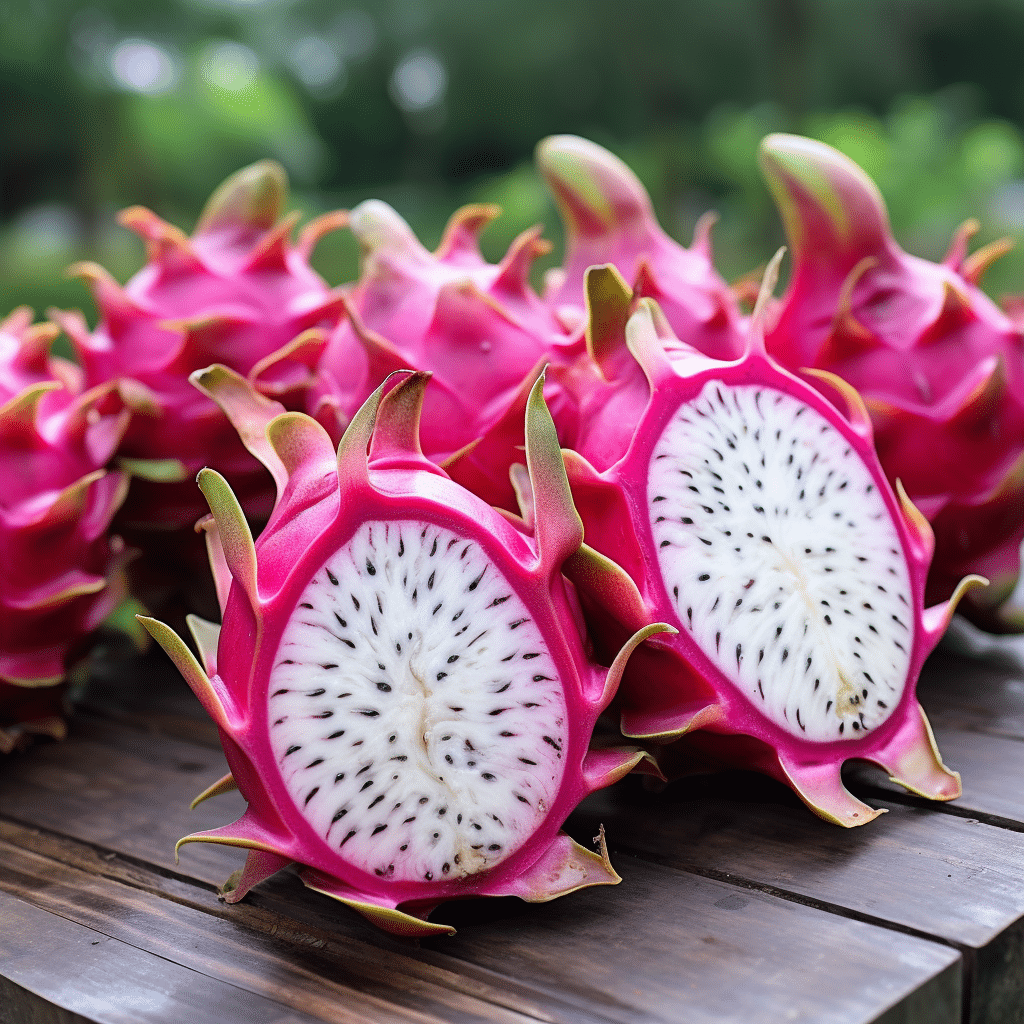Dragon fruit, also known as pitaya, is a tropical fruit that’s gaining popularity worldwide. It’s not only known for its unique look and vibrant color, but also for its health benefits. However, growing a dragon fruit plant requires specific care and attention. In this guide, we’ll walk you through the process of dragon fruit plant care.
Understanding Dragon Fruit Plants
Dragon fruit plants are cacti that are native to Central America but are now grown all over the world. They are known for their stunning, ornamental flowers and their vibrant fruit. The plant is a climbing cactus and is most often seen growing on trees or fences.
The dragon fruit plant is a tropical plant and thrives in hot, humid conditions. It’s a hardy plant that can survive in less than ideal conditions, but for optimal growth and fruit production, it needs a specific environment and care.
Types of Dragon Fruit Plants
There are three main types of dragon fruit plants: Hylocereus undatus, Hylocereus costaricensis, and Hylocereus megalanthus. Each type produces a different color of fruit, ranging from white to red to yellow.
Hylocereus undatus produces white-fleshed fruit with a pink exterior. Hylocereus costaricensis produces red-fleshed fruit with a red exterior. Hylocereus megalanthus, on the other hand, produces yellow-fleshed fruit with a white exterior.
How to Grow Dragon Fruit Plants
Dragon fruit plants can be grown from seeds or cuttings. However, growing from cuttings is the most common method as it’s faster and produces fruit earlier.
Here are the steps to grow a dragon fruit plant from a cutting:
- Choose a mature cutting from a healthy dragon fruit plant. The cutting should be about 10-15 inches long.
- Let the cutting dry for about a week. This allows the cut end to callous over, which helps prevent rotting.
- Plant the cutting in a well-draining soil mix. Cactus or succulent mix is a good choice.
- Water the cutting thoroughly and then let the soil dry out before watering again.
- Place the cutting in a sunny location. Dragon fruit plants need at least 6 hours of sunlight per day.
Caring for Dragon Fruit Plants
Once your dragon fruit plant is established, it will need regular care to thrive and produce fruit. Here are some tips for dragon fruit plant care:
Watering
Dragon fruit plants are drought-tolerant and do not require a lot of water. However, they do need regular watering during the growing season. Water thoroughly and then allow the soil to dry out before watering again. Overwatering can lead to root rot and other problems.
In the winter, reduce watering to once a month or less. The plant is dormant during this time and does not need much water.
Feeding
Dragon fruit plants benefit from regular feeding during the growing season. Use a balanced fertilizer and follow the package instructions for application rates. According to the University of Florida IFAS Extension, a good rule of thumb is to fertilize every two months during the growing season.
Pruning
Pruning is an important part of dragon fruit plant care. It helps to control the size of the plant and encourages better fruit production. Prune in the early spring, removing any dead or diseased branches. Also, prune back any branches that are growing too long or that are not producing fruit.
Harvesting Dragon Fruit
Dragon fruit typically takes about six months to a year from flowering to reach full maturity. The fruit is ready to harvest when it’s bright in color and slightly soft to the touch.
Harvest the fruit by cutting it from the plant with a sharp knife. Be careful not to damage the fruit or the plant. Once harvested, dragon fruit can be stored in the refrigerator for up to a week.
Common Problems and Solutions
While dragon fruit plants are relatively easy to care for, they can be susceptible to certain pests and diseases. Here are some common problems and their solutions:
Pests
Dragon fruit plants can be affected by a variety of pests, including aphids, mealybugs, and scale insects. These pests can be controlled with insecticidal soap or other organic pesticides.
Diseases
Dragon fruit plants can also be affected by fungal diseases, especially if they are overwatered. If you notice any signs of disease, such as yellowing leaves or black spots, reduce watering and consider applying a fungicide.
Conclusion
Dragon fruit plants are a unique and exotic addition to any garden. With the right care, they can thrive and produce beautiful, delicious fruit. Whether you’re a seasoned gardener or a beginner, growing and caring for a dragon fruit plant can be a rewarding experience.
Join Our Green-Thumbed Community!
Ready to transform your garden into a tropical paradise with thriving dragon fruit plants? Subscribe for free to How to Grow Everything and unlock a world of expert gardening knowledge tailored just for you. Whether you’re a novice or a seasoned gardener, our personalized advice will help you build the garden of your dreams. Enjoy exclusive tips, special offers, and the best gardening deals delivered straight to your inbox—100% free, from our family to yours. Start growing your dream garden today!


